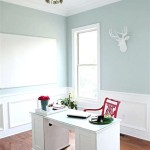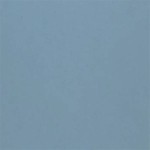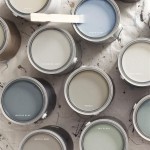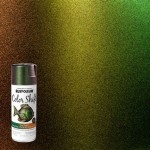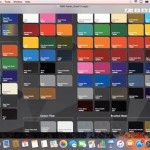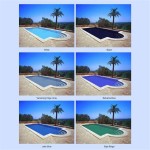Can Bunnings Colour Match Paint From A Photo?
Bunnings Warehouse, a prominent hardware and home improvement retailer in Australia and New Zealand, offers a variety of services related to paint selection and application. One frequent query among customers revolves around the possibility of colour matching paint directly from a photograph. The feasibility and accuracy of this process, as implemented by Bunnings, warrants a detailed examination.
Colour matching, in general, involves identifying the precise pigment composition of a particular colour to replicate it using available paint bases and colourants. This process is often employed when attempting to match existing paint on a wall or piece of furniture, or when trying to reproduce a colour seen in a sample or image. While Bunnings provides colour matching services in-store, understanding the limitations and capabilities concerning photo-based colour matching is crucial for customers.
The Limitations of Photo-Based Colour Matching
Relying solely on a photograph to colour match paint presents numerous challenges due to the complex interplay of factors influencing colour perception and reproduction. These factors can significantly impact the accuracy of the final matched colour.
Firstly, the accuracy of the colour displayed in a photograph is heavily dependent on the device used to capture the image. Smartphones, digital cameras, and other imaging devices possess varying sensor sensitivities and colour processing algorithms. These variations can lead to colour distortions in the captured image, resulting in a colour that differs from the original.
Secondly, the display settings of the device on which the photograph is viewed play a critical role. Monitors, screens, and projectors can exhibit significant differences in colour calibration, brightness, contrast, and colour temperature. These variations can alter the perceived colour in the photograph, making it difficult to accurately assess the true colour.
Thirdly, lighting conditions during both the image capture and viewing stages can significantly influence colour perception. Different types of lighting, such as incandescent, fluorescent, or natural daylight, have varying spectral characteristics that can affect how colours appear. Shadows, highlights, and reflections in the photograph can further complicate the colour matching process.
Fourthly, the quality and format of the image itself can impact colour representation. Highly compressed images, for example, may exhibit colour banding or artifacts that distort the original colours. Additionally, the colour space used to save the image (e.g., sRGB, Adobe RGB) can influence how the colours are interpreted and displayed.
Fifthly, the subjective nature of colour perception adds another layer of complexity. Individuals can perceive colours differently due to variations in their own physiology and cognitive processing. This subjective element can make it challenging to achieve a universally agreed-upon colour match based solely on a photograph.
Bunnings’ In-Store Colour Matching Process
Bunnings relies on spectrophotometry and visual assessment for its in-store colour matching services. Spectrophotometry involves using a specialized device, a spectrophotometer, to measure the spectral reflectance of a paint sample. This device emits light across the visible spectrum and measures the amount of light reflected back at various wavelengths. The resulting spectral data provides a precise and objective representation of the colour.
The spectrophotometer data is then used to formulate a paint mix using the appropriate base and colourants. Bunnings typically utilizes a computerized system that contains a database of paint formulas and colourant properties. The system calculates the optimal combination of colourants to achieve a close match to the target colour.
Even with the spectrophotometer, visual assessment remains a crucial step in the colour matching process. Trained paint specialists at Bunnings visually compare the matched paint with the original sample under controlled lighting conditions. They may make minor adjustments to the formula to fine-tune the colour and ensure a satisfactory match.
Given the reliance on physical samples and spectrophotometric analysis, Bunnings' colour matching process is generally more accurate when a tangible sample is provided. This sample allows for direct measurement and visual comparison, minimizing the influence of the factors that can distort colours in photographs.
How To Improve The Chances of a Successful Match Using A Photo
While Bunnings might not explicitly guarantee colour matching from photographs alone due to the inherent limitations, certain steps can be taken to improve the chances of achieving a reasonably close match.
Firstly, take the photograph under optimal lighting conditions. Natural daylight, diffused and without direct sunlight, is generally the best option. Avoid taking photos in dimly lit environments or under artificial lighting that may cast a colour tint. Ensure the area being photographed is evenly illuminated. Consider taking multiple photos under slightly different lighting conditions to provide a range of options.
Secondly, calibrate the display device being used to view the photograph. Most modern monitors and screens offer settings to adjust brightness, contrast, colour temperature, and colour balance. Use a colour calibration tool or follow online guides to optimize the display settings for accurate colour representation. Be aware that even after calibration, minor variations may still exist.
Thirdly, avoid cropping or editing the photograph excessively. Cropping can remove important visual context, while editing can alter the colours and introduce distortions. If editing is necessary, make only minor adjustments and be mindful of preserving the original colour integrity.
Fourthly, print the photograph on high-quality photo paper using a calibrated printer. While a printed photograph still represents a transformation of the original colour, it can provide a more tangible reference point for the Bunnings paint specialist. Ensure the printer settings are configured to accurately reproduce colours.
Fifthly, provide as much contextual information as possible to the Bunnings paint specialist. Explain the source of the colour, the intended application, and any relevant details about the surrounding environment. This information can help the specialist make more informed decisions during the colour matching process.
Sixthly, acknowledge that a perfect match may not be achievable when relying on a photograph. Be prepared to accept a colour that is close to the original but may not be an exact replica. Consider obtaining a sample pot of the matched paint and testing it in the intended location to ensure it meets expectations.
Ultimately, the effectiveness of colour matching from a photograph depends on a combination of factors, including the quality of the photograph, the accuracy of the display device, the skill of the paint specialist, and the customer's expectations. While Bunnings may attempt to match colours from photographs, providing a physical sample is almost always the preferable approach for achieving a more accurate and reliable result.
Even with the best efforts, colour variations can occur due to differences in paint formulations, application techniques, and environmental conditions. It is always advisable to test a small area with the matched paint before applying it to a large surface.
Paint Colour Matching Bunnings
Paint Colour Matching Bunnings

How To Match Paint Colour Bunnings Work Community

How Do You Match Paint Colours Bunnings Work Community
.jpg?strip=all)
The 6 Best Tools For Colour Matching Inspirations Paint
Paint Colour Matching Bunnings

How To Match Paint Colour Bunnings Work Community

The 6 Best Tools For Colour Matching Inspirations Paint

How To Get Matching Wall Paint From Bunnings
Paint Colour Matching Bunnings
Related Posts

